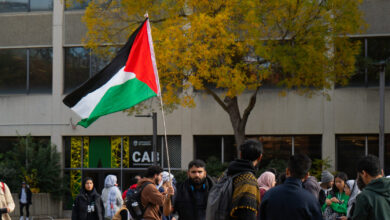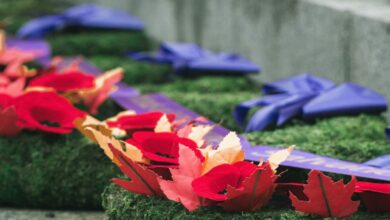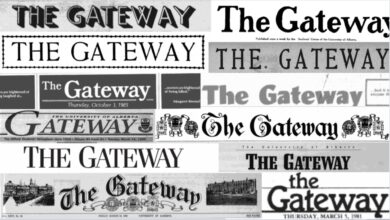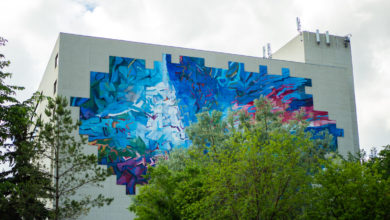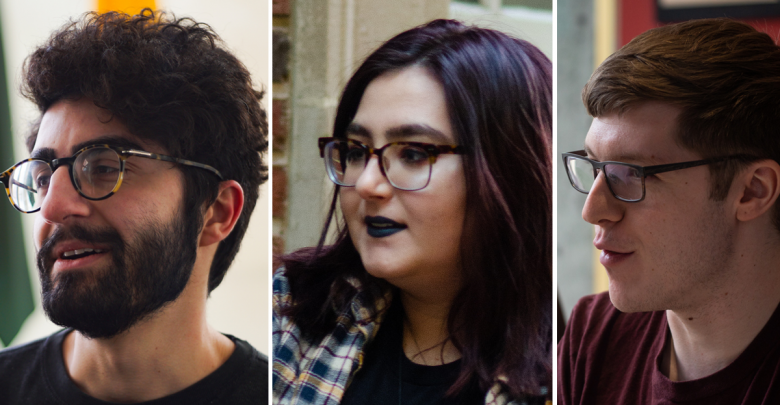 Richard Bagan
Richard BaganLooking back on my childhood is kind of funny, because the fact that I’m bisexual is incredibly obvious in hindsight. One of my first crushes was Mulan. Rya Kihlstedt’s character in Home Alone 3 enraptured 10-year-old me. As I developed crushes on male classmates, I also noticed female classmates and friends. I thought they were exceptionally pretty, to the point where I’d think “She’d be perfect for me, if she were a boy.”
Yet, when I finally put two and two together, my initial reaction was panic. I was a brace-faced, greasy-haired 12-year-old who navigated social situations like I was walking a tightrope over Niagara Falls. All of the sudden, my interactions with female classmates took on a whole new dimension of anxiety. Could she tell I liked her? Was I being too invasive? I didn’t realize it at the time, but I’d internalized the idea that liking other girls made me creepy.
Maybe it was the constant use of the word “lesbian” as a put-down — when straight girls I knew wanted to insult someone, calling them gay was their go-to. Maybe it was the section in my pink study Bible that condemned homosexuality as a “detestable sin.” All I know is that somewhere along the way, the idea of same-gender attraction as degenerate and unclean planted itself firmly in my head, and it would take me years to unlearn it.
As it turns out, my experience isn’t uncommon for people across the multisexual spectrum (that is, people who are attracted to more than one gender). As we discover our identities and come out to ourselves and others, stereotypes and negative preconceived notions about bi, pan, and queer folks have a profound impact on us. Throughout our lives, we confront ourselves and society alike as we separate who we are from who the world says we are. As I spoke to other people who are attracted to more than one gender, I discovered a number of common themes. We deal with prejudice as soon as we are old enough to understand it, in every aspect of our lives, and in a number of forms.
Eliot Howard (they/them), a writer and musician who grew up in the early 2000s, practically never heard about LGBTQ people at all during their junior high years — except in one particular context. “It was still really common to hear about hate crimes all the time,” they recall, frowning, “and that was the context in which people were talking about being gay. I was super scared that people wouldn’t accept me… because I heard about people getting killed for being this way.” Fearing a possible negative reaction from peers, Eliot stayed in the closet for years. “I was afraid of men I was attracted to knowing. I was afraid I’d lose my best friends.”
David Semaan (he/him), a political science graduate student, also remembers an environment with a less-than-accepting attitude towards LGBTQ people. He grew up in western British Columbia, in a place he describes as “one of the most conservative parts of the country.” In an environment steeped in religion and conservative politics, coming out to himself was hard, and coming out to others was out of the question.
“I was 21 when I started to think of my sexuality as something real,” he tells me. “I was in a long-term relationship, [which started] when I was 18. For most of that time, I denied my sexual orientation.” These days, David uses his childhood experiences with prejudice to help others through the peer support services at The Landing, U of A’s non-profit society for gender and sexual diversity, turning hard and painful experiences into constructive ones.
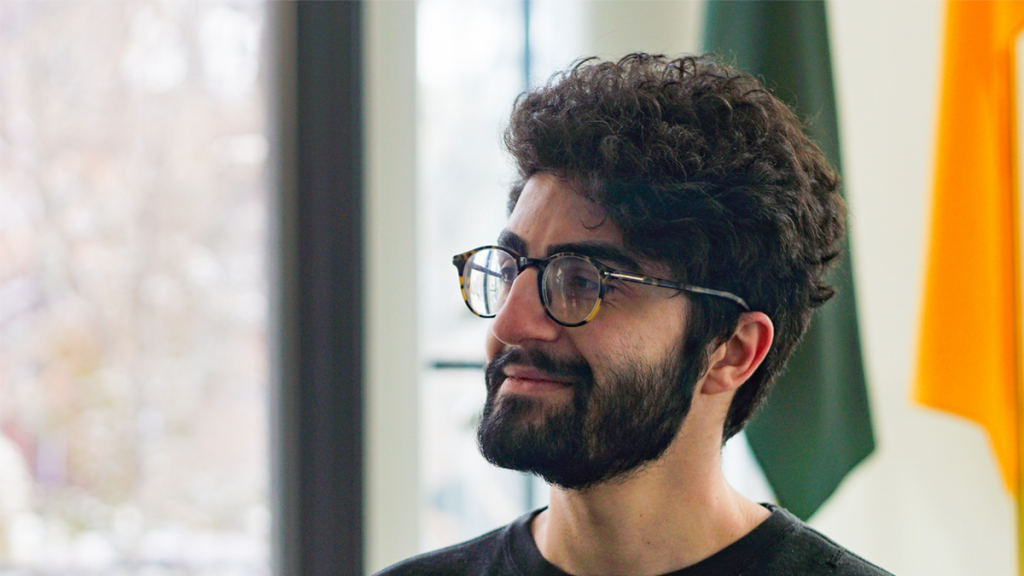
Sometimes, however, it’s not what is said — it’s what isn’t said. Janeen Marko (she/her), a third-year double major in history and anthropology, doesn’t remember an environment that was hostile so much as it was silent. “I was in Catholic school until grade nine, so I wasn’t exposed to any LGBTQ conversations,” she explains. “They sort of bypassed the ‘gays go to hell’ conversation by not talking about ‘gays’ at all.”
Her family environment was a bit more welcoming: her sister came out as bisexual a year before she did, and her parents reacted well. But Janeen didn’t want them to doubt her, as they had initially doubted her sister, so she only came out to them after she got her first date with a girl — two years after she came out to her friends.
These experiences reflect a common pattern in the experiences of LGBTQ youth: many of us are aware of our sexualities for some time (months or even years) before we tell anyone else.
For multisexual youth in particular, this period can be filled with self-doubt. We don’t fit neatly to into the categories of “straight” or “gay,” no matter how much we might try to.
For a long time, I used my attraction to boys to overcompensate for my attraction to girls. I thought that I could somehow “fight” my attraction to girls by actively choosing to like boys instead. The idea that I didn’t have to choose didn’t even occur to me. Some of the male crushes I told my junior high friends about were real, but most of them weren’t. I felt the need to constantly “prove” my supposed heterosexuality to myself and others, to deny the dual nature of my sexuality and snuff it out.
A common narrative around coming out is that it makes everything better, that all the baggage associated with your sexuality disappears with the closet. However, this is rarely the case. When I accepted my bisexuality, my insecurities didn’t go away like I thought they would. Instead of needing to convince myself and others that I was straight, there was now a need to prove that I truly “counted” as bi. After all, I’d never so much as kissed a girl. Could I really be sure that what I was feeling was real?
Janeen, who is in a long-term relationship with a man, understands this dilemma all too well. “When I go to Pride,” she tells me, “I don’t go with him, because I don’t want to be accused of faking it.” She describes a kind of “imposter syndrome” that she wrestles with. “I’ve never had a serious relationship with a woman, which is the other thing… there’s always that question, am I gay enough?” Multisexual women are often stereotyped as straight women faking it for (male) attention, so those of us dating men often feel the need to justify ourselves.
Of course, men are not exempt from backlash either. Sometimes biphobia comes from unexpected places: David recalls a particularly awkward incident with a guy he used to date. “He introduced me to his friend and he said, ‘He’s not gay, just bi.’” David shakes his head. “Yeah… that was definitely the last time we went out.”
Multisexual men are often seen as either non-existent or as watered-down versions of gay men, which has an impact on how potential dating partners treat them. David has used dating apps in the past, and said that “as a bisexual person dating online, it can be really hard to put yourself out there.”
But one of the most pervasive stereotypes about us, across genders, is that of the promiscuous bi. Eliot has always been interested in what many different people have to offer, but sometimes feels guilt for “upholding a ‘negative’ stereotype.”
“People have a hard time seeing [others] as individuals, and not as stand-ins for the entire group they represent, especially when they’re any kind of minority,” they point out. While they don’t see having an active sex life as inherently bad, the social pressure is still there. “It’s someone else’s fault if they want to interpret who I am as being indicative of anything. But still, I feel a little bit guilty.”
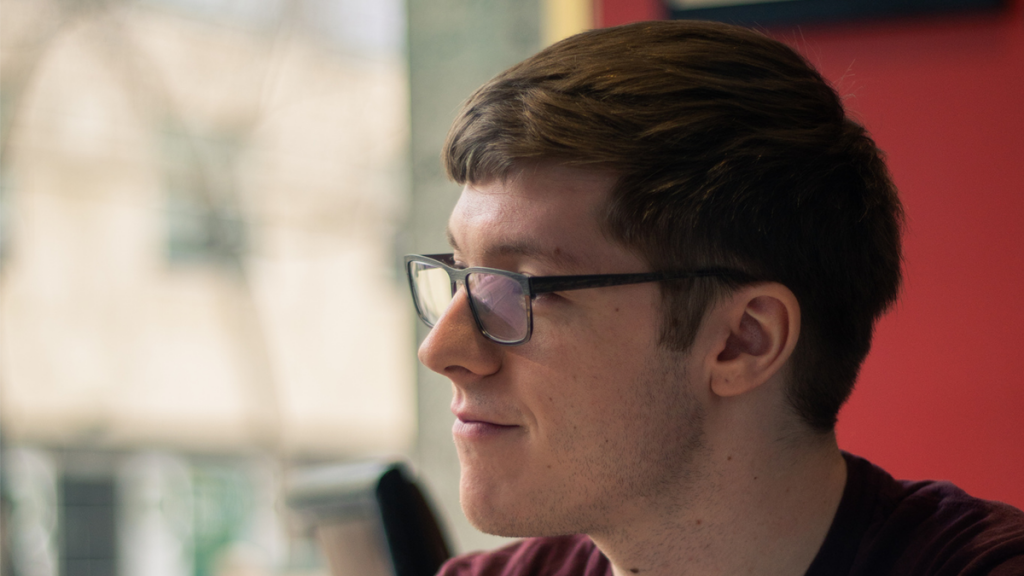
Eliot Howard
Our sexual and romantic lives — which genders we’ve been with, how many relationships we’ve had — are picked apart and scrutinized. Whether we’re seen as valid, as real, isn’t always up to us. This is especially true if gender comes into question along with sexuality.
“It’s an interesting thing,” Janeen says, “to be questioning your gender identity and being bisexual.” She remembers being seen as a “tomboy” from when she was quite young, and as she grew older, her non-conforming gender presentation and her sexual orientation became increasingly intertwined. “For a long time, I thought I only liked women because I wanted to be a man,” she says.
Janeen no longer believes this to be the case, but says that she could see herself “starting to live more androgynously.” This wasn’t always comfortable territory: Janeen wanted to wear a suit to her high school graduation, but after her mother pointed out others might see her as trans, she wore a dress instead. “I wasn’t ready for it,” she says. These days, Janeen is still exploring her gender identity, but at her own pace. “I don’t identify as trans, but I may or may not be a woman.”
Eliot, a queer and non-binary person, finds looking back on their childhood illuminating as well. “I definitely didn’t identify with effeminate tropes,” they say, referring to when they were beginning to identify as queer. “It’s interesting looking back, because my gender’s become more complicated since then.”
Gender, for Eliot, is a process of negotiation: Eliot hesitates to claim “non-binary” or any given label because of how it could be perceived. Like with sexuality, a concern about “misrepresenting” the non-binary persists. Eliot takes a more philosophical approach to gender, using their experiences and uncertainties to ask big questions. “Does anyone really know what gender they are?” they ask.
We are told what we are supposed to be, in terms of who we are and who we love, from the time we are born. Is accepting our assigned identities the same thing as knowing our genders or sexualities? It’s hard to say, but in a society undergoing a paradigm shift of epic proportions, it’s exactly the kind of question we need to ask ourselves.
As multisexual individuals have explored who we are, society at large has experienced a similar type of introspection. We are a society in transition, trying to avoid repeating the mistakes of the past. In many ways, it has changed for the better for bi, pan, and queer people. But even the most optimistic of us will admit that there is much progress to be made.
Janeen has witnessed a shift in public discourse surrounding queer people through her studies in history and anthropology. In previous generations of historians and anthropologists, Janeen explains, there was a “general erasing of women who love women. They absolutely existed… but they were erased by [those] who documented it.” She describes a “larger cultural shift” within her fields of study to pay more attention to “untold histories” and bring the stories of the marginalized to light. Women, people of colour, LGBTQ people, and other largely ignored groups are starting to be treated as worthy of study and attention in academia, creating a view of our past that is no longer centered on the most privileged.
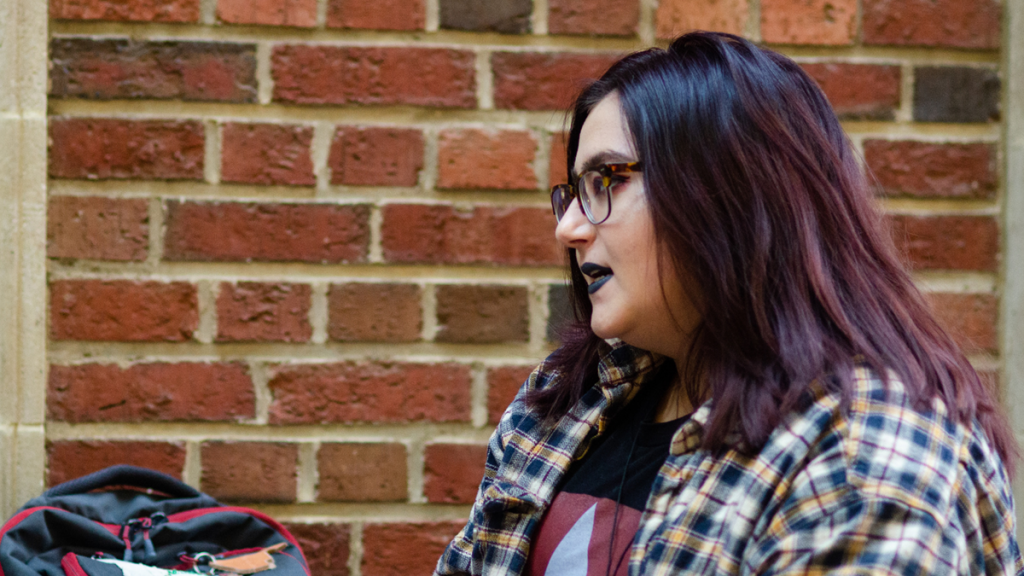
David, who studies topics relating to current LGBTQ issues, says that being open about our sexualities in the workplace is still an issue for many of us. “Almost half of queer people are not out in workplaces, even if we’re out in every other aspect.”
David himself worked in automotive retail for five years, and only came out to two coworkers during that time due to what he calls a “culture of mocking homophobia.” Making fun of LGBTQ people was commonplace where he worked, and he felt that being open with his colleagues wasn’t worth the risk of ostracization. Despite the amount of change we’ve seen in the last half century, casual homophobia still permeates our society, indicating that stereotypes still heavily inform how people see us.
Eliot agrees that “the prototypical gay person” hasn’t really changed, even if we’ve made progress. They note that plenty of stereotypes about multisexual people are still quite common, like the fact that many people won’t date bisexuals for fear of being cheated on. The change, Eliot says, is in the presence of an open conversation. “People are talking about it… trying to debunk myths… but it’s still a process.”
It is a process, but it’s one well worth undertaking. It’s about giving the voices of multisexual people a platform, a way to freely share our experiences. It’s about making ourselves present without the need for caricatures or closets. It’s about representing who we are in ways that might help others see themselves in us, regardless of whether they’re queer or not.
When I look at who I am now, compared to the scared kid I was all those years ago, I can’t help but feel hopeful. Once, labelling myself as bisexual seemed impossibly daunting — now, it feels as natural as saying my name. The fact that so many stories like mine exist is proof that progress is possible, even within a society that can be hostile and intolerant. If the journey of a thousand miles begins with a single step, I’d say we are well beyond step one at this point. Now we just need to keep walking.
Edit: a reader pointed out an incorrect pronoun for one of the interviewees. It has now been fixed.

